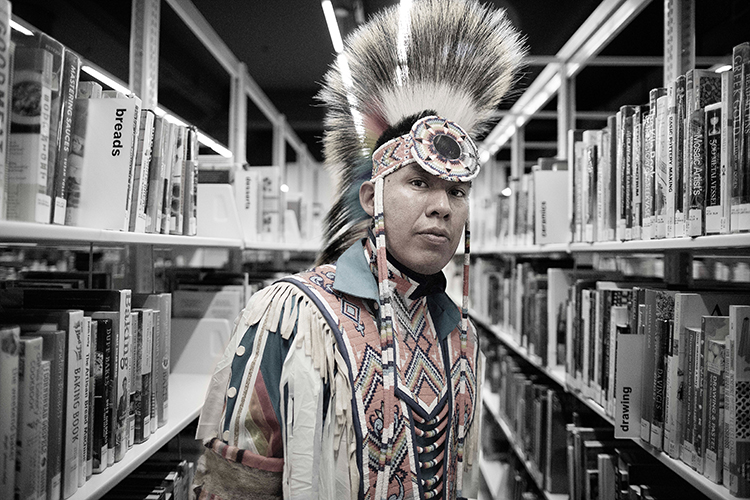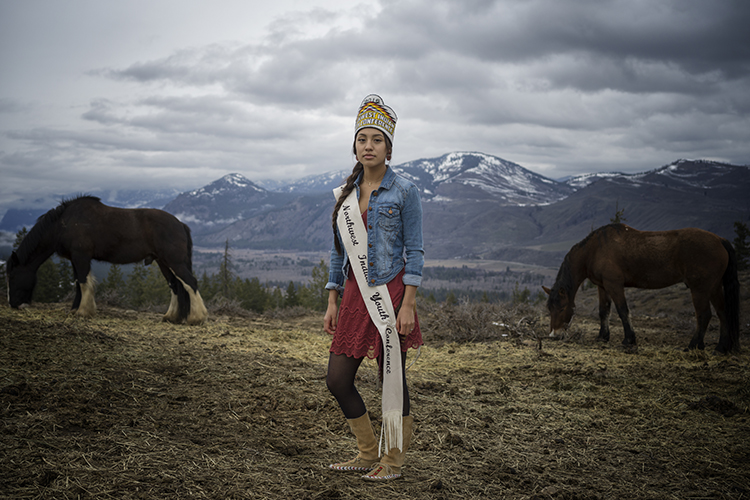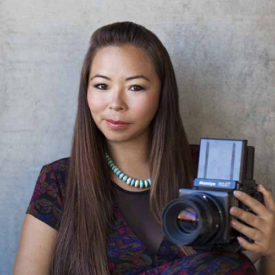Photographer reveals complexities of Native American history, contemporary lives
Native documentarian's photos will be on display Tuesday, April 17, from 5:30 to 7:30 p.m. in the in the Multicultural Community Center
April 13, 2018

(Photo by Matika Wilbur)
As a kid growing up on a Swinomish reservation in Washington state, Matika Wilbur thought it was inherently bad to be Native American.
“I remember thinking that being an Indian meant poverty,” she said. “Being an Indian meant that we were going to die younger. It meant that we were going to be raped and nobody would care. Those were the things that were the Indian identity to me.”
But when she was 21, her mother asked her to photograph a group of elders in her community — the last nine people in her tribe who learned to speak their indigenous language in their homes — and it started Wilbur on a journey to understand how Native Americans’ history is intertwined with their contemporary reality. Since then, she has taken photographs of native people in more than 400 tribal communities in the U.S. and has displayed them in shows across Washington.
Next week, Wilbur will be at UC Berkeley to present her photos in “Changing the Way We see America,” part of a speaker series hosted by the Native American Staff Council and supported by the Division of Equity and Inclusion.
Carmen Foghorn, the director of Berkeley’s American Indian Graduate Program, says Wilbur’s work helps to bring a deeper humanity to the Native American experience. “She’s getting a 21st century image of us, of Native Americans,” said Foghorn. “She really exposes the variety of our Indian presence and the reality. We’re real living people with real issues.”

(Photo by Matika Wilbur)

(Photo by Matika Wilbur)

(Photo by Matika Wilbur)
When Wilbur takes photos in a tribal community, she honors traditional potlatch protocol and shares songs and prayers. She spends hours, and sometimes days, with the people she photographs, allowing them to choose where they’re photographed and how.
“Misrepresentations and stereotypical images of Indians really affect the lives of our people,” said Wilbur. With the photos she takes, she asks herself, “How am I contributing to this problem with the images I’m making? Or how am I contributing to the solutions that need to be made?”
Wilbur shoots on black and white film, makes her prints on silver gelatin fiber and colors them by hand with oil paints.

(Photo by Matika Wilbur)

(Photo by Matika Wilbur)

(Photo by Matika Wilbur)
Her goal is to shift the collective consciousness of what it means to be Native in the U.S. “I’d like to see a modern world that doesn’t erase its indigenous intelligence,” said Wilbur. “One that embraces the rich complexity of indigenous culture and traditions.”
Wilbur will present her photos on Tuesday, April 17, from 5:30 to 7:30 p.m. in the in the Multicultural Community Center in the Martin Luther King Jr. Student Union. For more details, visit the events calendar.
